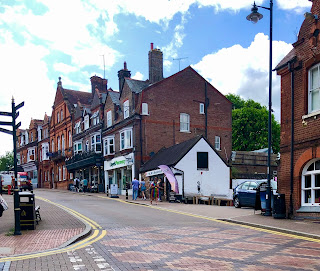Going into London is always an adventure, and I don't try to see too much in a day. This time I headed to the Tower of London, which I haven't visited since the boys were young. It is known for housing the Crown Jewels, but I had heard of an experimental garden being started in the drained moat. One look at the expanse of wildflowers prompted me to pay the £ 33 entry price and join the queue of tourists.
As you can imagine, the moat was originally built by William the Conquerer as a defensive ditch. It was flooded by the Thames at high tide. Various kings after him extended the moat so that the Tower was surrounded by water. This water moved in and out with the tide and supplied fresh fish and washed away sewage from the inhabitants.
More building cut off the moat's access to the river, and the trapped water became a fishery. However, by the 1840's, the smell of the stagnant water full of sewage became so bad that the Duke of Wellington was forced to have the moat drained. It has been dry ever since. At times food was grown on the flat bottom of the ditch, including during WWII when the residents of London were encouraged to turn their lawns into vegetable gardens.At other times the moat became a camp for soldiers ready to go into action. It also doubled as a training space for royal guards.
Then in the 1970's the idea of creating a very prominent garden became a reality as flowers were planted in shape of the Royal Coat of Arms and Cipher of Elizabeth II. This can easily be seen by anyone crossing the Tower Bridge. Different displays have been exhibited here to commemorate royal events. When I visited last summer, I noticed there was some construction going on, but nothing growing, just piles of dirt.
The new project was to celebrate the Queen Platinum Jubilee with a wild flower garden throughout the moat. Pathways and art pieces were placed, but nothing was planted in the hope that nature would take over. Nothing grew. So this year the moat was plowed over, fertilized, sowed with seed, and watered. This resulted in the beautiful expanse of colorful "wild" flowers I wandered through on my visit to the Tower instead of queuing to see the jewels. There is a great diversity of color that might not be found in the country. Poppies and cornflowers of many colors spilled over into the path, ornamental thistles and Queen Anne's lace towered above. The bees were busy moving between the foxgloves and daisies. There were no gardeners at work weeding and snipping, just hoses being used to water the area. This is not a native wildflower field, it is a field carefully cultivated to look wild.






